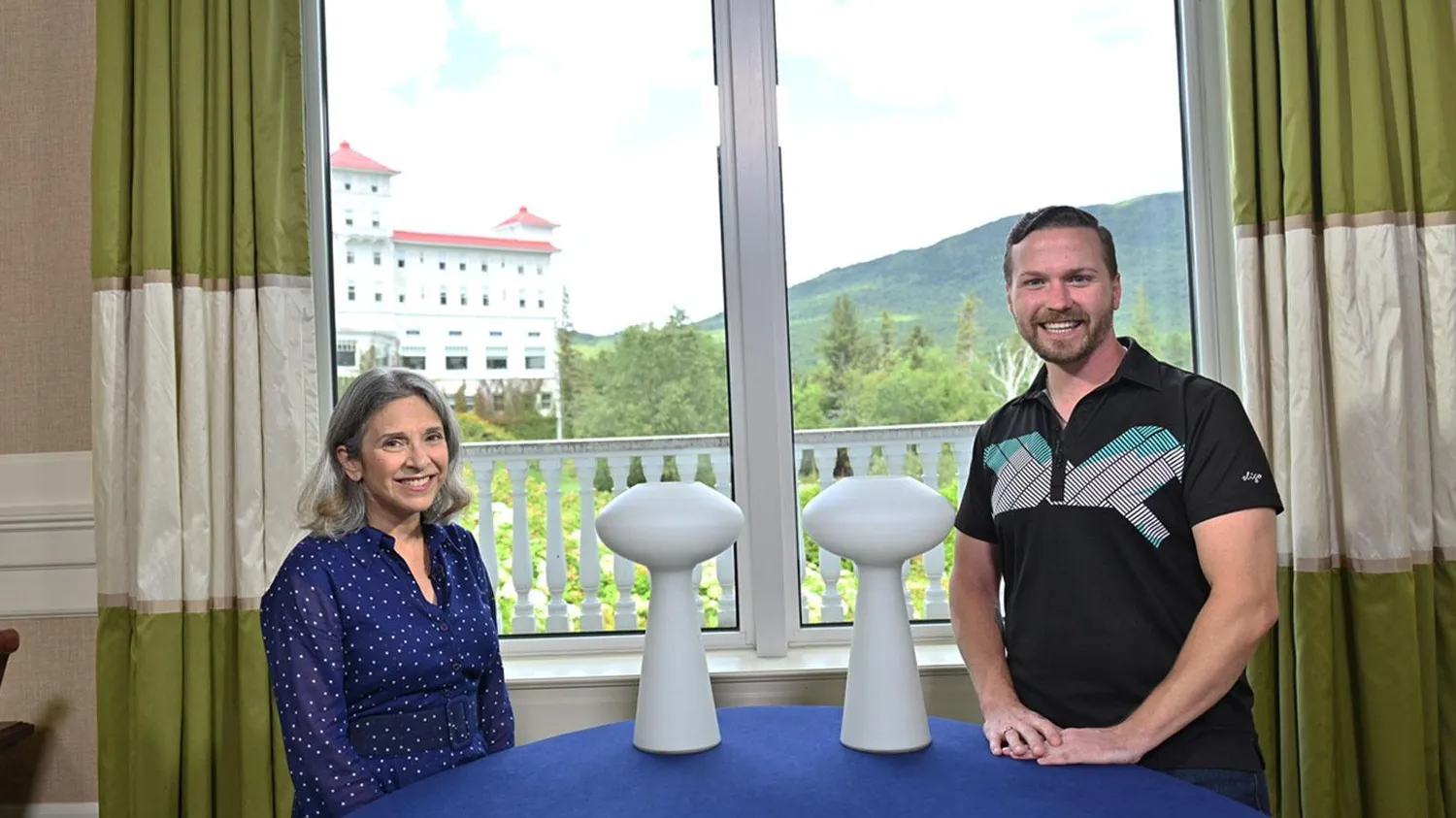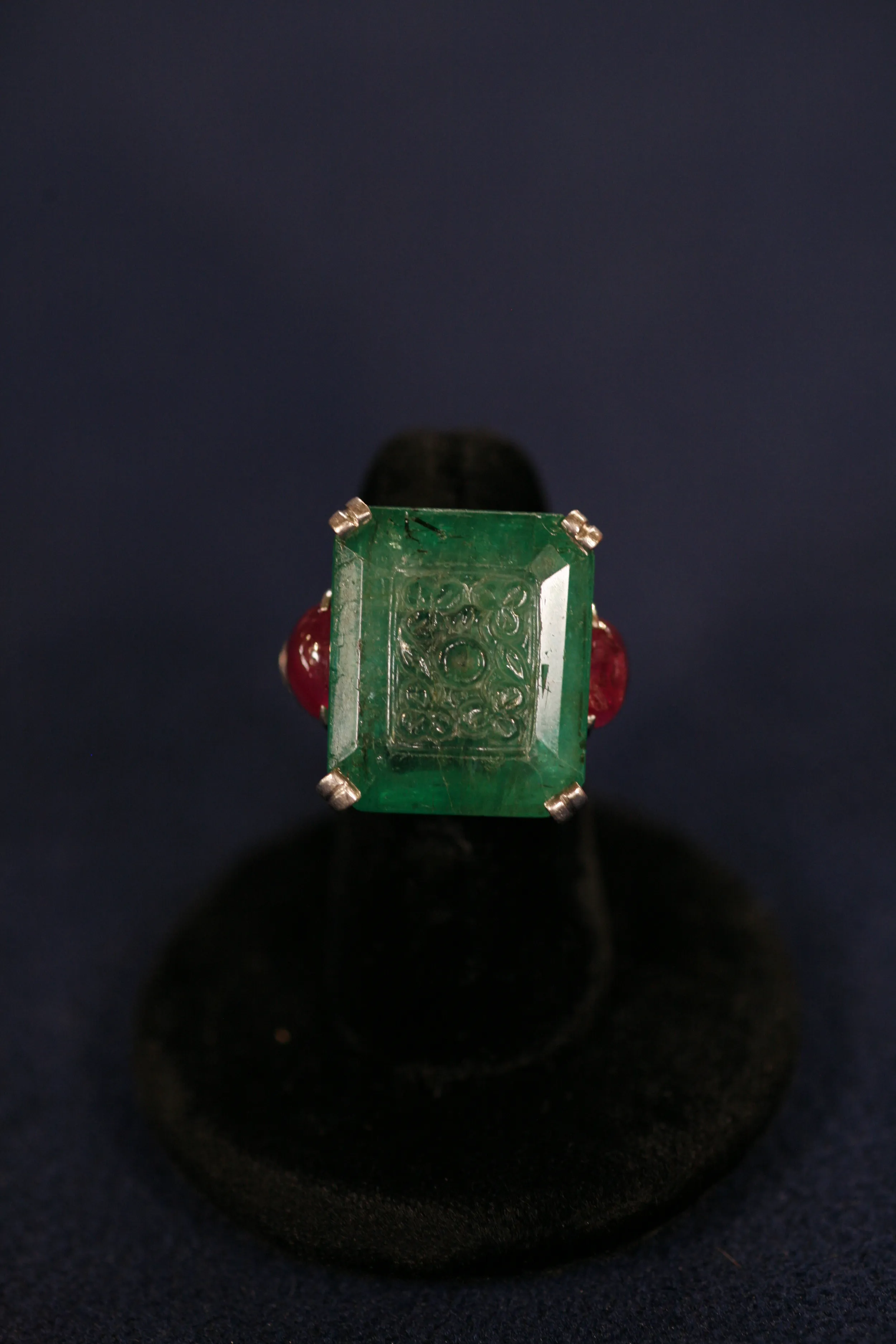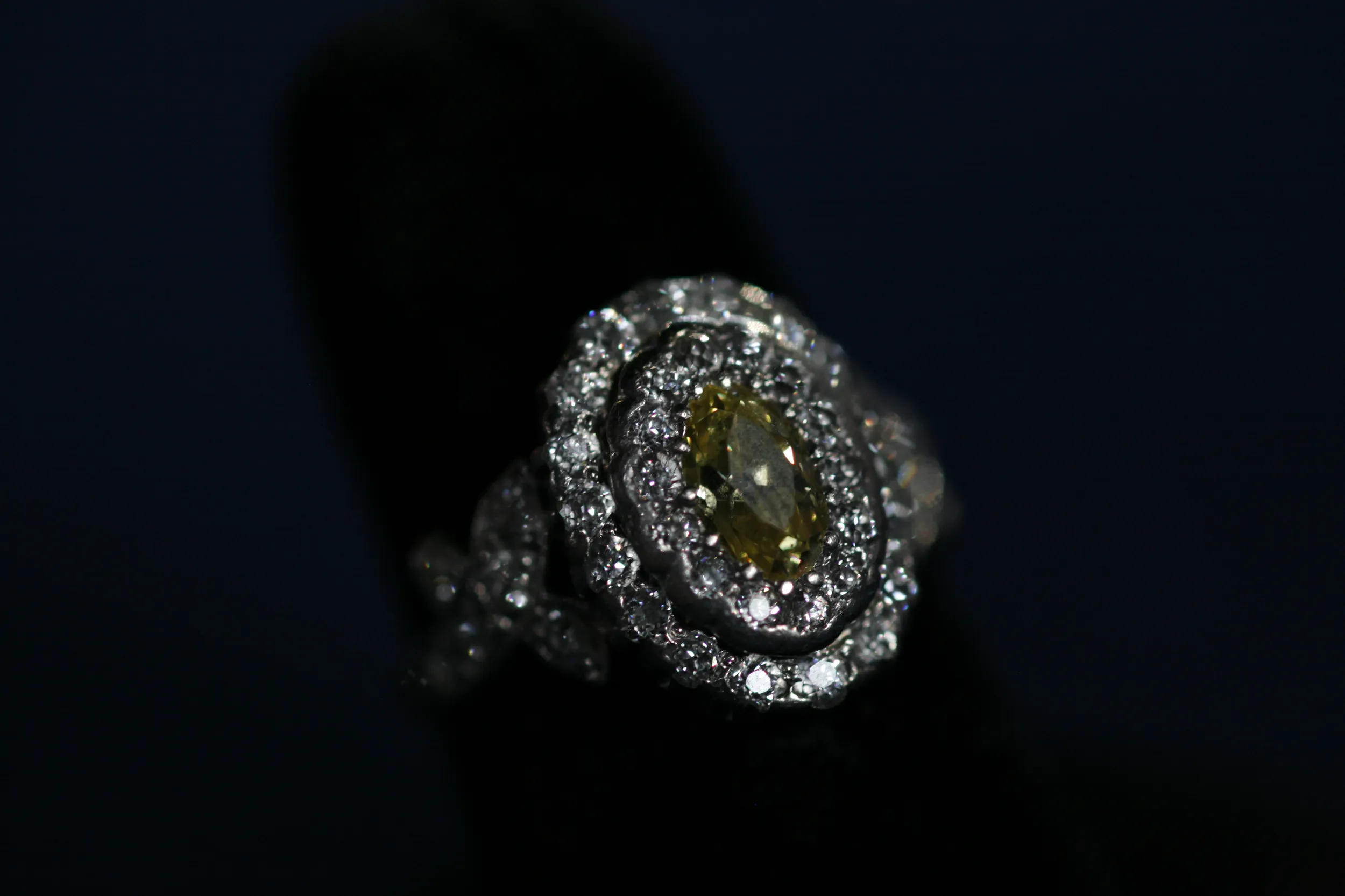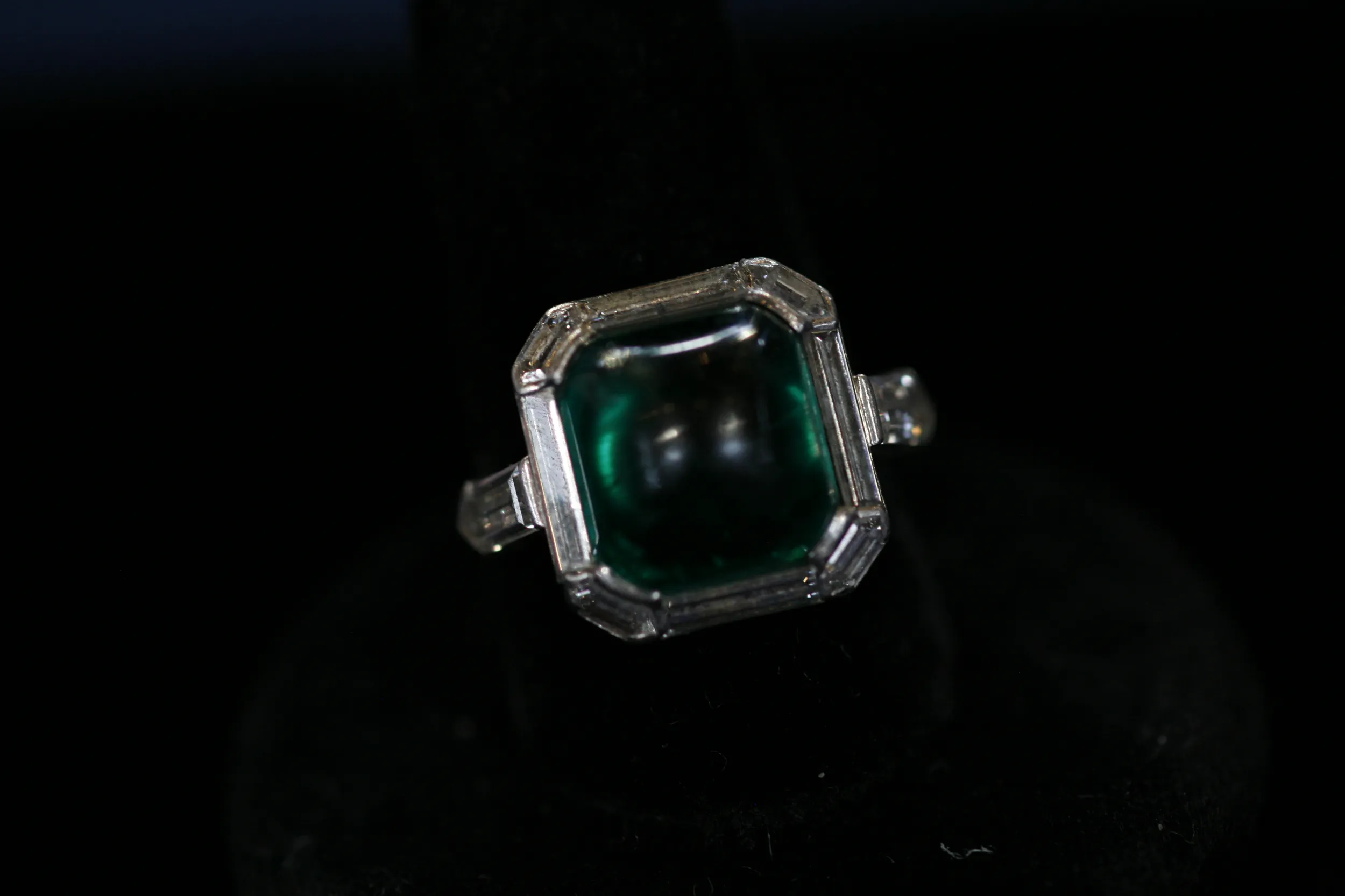GUEST: So I got it about 20 years ago.
APPRAISER: Mm-hmm.
GUEST: It belonged to my grandmother-in-law. And when she passed, the family got to go sort of pick items that they wanted.
APPRAISER: Mm-hmm.
GUEST: And as I was a daughter-in-law, I was the last to pick.
APPRAISER: (laughs)
GUEST: This is one of the things that I picked, and it was actually very damaged, which is why I think no one else had picked it.
APPRAISER: Uh-huh.
GUEST: And I had it probably for about five or six years, and it was not quite wearable, because the stone would kind of slip. So I went and I got it restored and spent a little nice sum of money to get it restored. And I was stunned when I got it back, how beautiful it was.
APPRAISER: Mm-hmm. And what do you think that the central stone is?
GUEST: I believe that it was amethyst, and I thought that's what I was told it was when I got it repaired.
APPRAISER: Mm-hmm. How much did you pay your restorer to fix the ring?
GUEST: I paid about $850 to have it restored.
APPRAISER: Mm-hmm. So this ring is from the Art Deco period. The Art Deco period began in France right before World War I. And then it really caught on in America in the '20s to early '30s. This ring was most likely made in America, and I would guess you're more towards the 1930 time than the 1920 time, based on the style. And the center stone is what really intrigued me, because you said that your jeweler had said it was an amethyst, correct?
GUEST: Correct.
APPRAISER: Now, I don't know if you noticed that when you kind of rock it back and forth, or maybe you, you take it from inside to outside, that it has a little bit of a color change?
GUEST: Yeah.
APPRAISER: It goes kind of from blue to purple? And I put it on a jeweler's machine called a refractometer, which measures the way light travels through the stone. And it's not an amethyst.
GUEST: Oh.
APPRAISER: Um, so it is a synthetic sapphire.
GUEST: Oh, wow.
APPRAISER: So part of the Art Deco movement was this embrace and love of modernity. They loved science and new technologies. And a synthetic stone, so a stone created in a lab, was really interesting to them. And people really loved them in j, in, in jewelry. So this is a synthetic sapphire. It is chemically identical to a sapphire that's grown in the Earth. It just happens to have been grown in a lab. And I, and I love the fact that they change color. There's a very, very rare amount of natural sapphires that change color. But synthetics can do it more often, and I just think it's fun, when you're inside, it's one color, and you're outside, it's another. This wasn't a cheap stone. I think sometimes now when we hear synthetic, we, we think that's a bad thing, but it wasn't then.
GUEST: Yeah.
APPRAISER: The mount on this is an extremely expensive mount. It's made of platinum, it has diamonds, the workmanship is absolutely incredible. If it came up for, for auction, we would probably be looking at somewhere in the $1,500 to $2,000 range.
GUEST: Lovely.
GUEST AND APPRAISER: (both laugh)
GUEST: That's so exciting.
APPRAISER: If the ring were an amethyst, you would probably be looking at a value of about $600 to $800. Conversely, if this was a natural color change sapphire, you'd be looking at $30,000 to $50,000.








